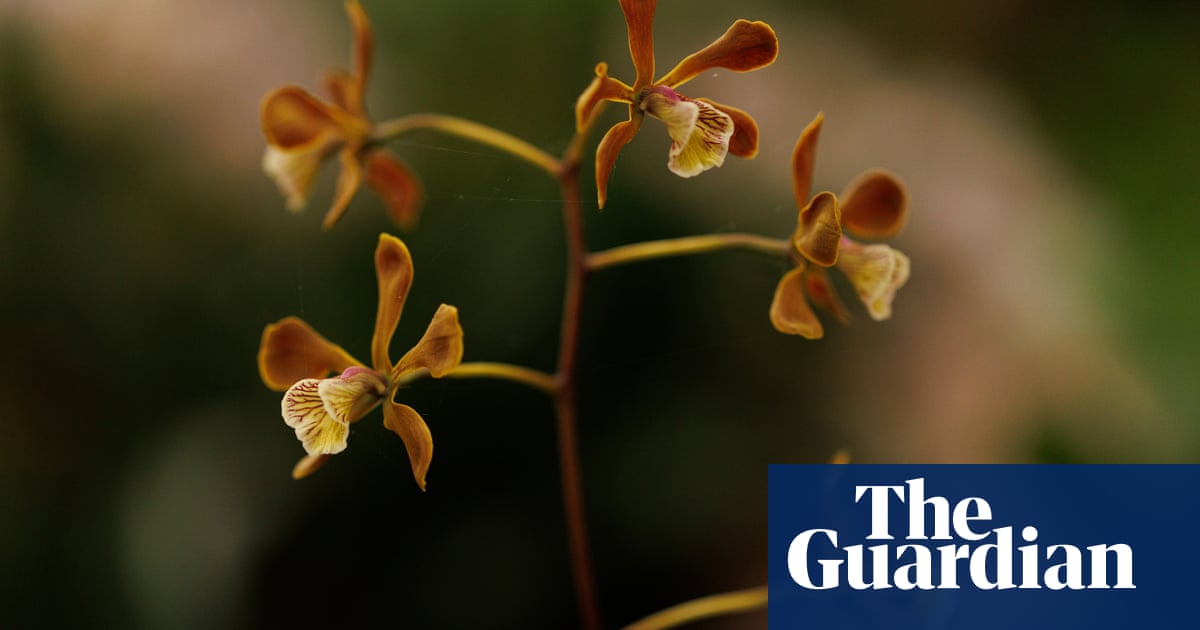World
Scientists transplant soil fungi in race to save world’s threatened orchids

Scientists are racing against the clock to save the world’s orchids by discovering the soil fungi they need to thrive, breeding them and then, in a first for conservation, transplanting them into orchid habitats.
Among the showy blooms at Chelsea flower show this week was a moss-covered exhibit, sprouting from which were the types of rare, native flowers one does not normally see at horticultural exhibits.
Scientists from botanic gardens in the UK and the US set up a stand at the flower show to display the rare and threatened orchids from around the world and raise awareness of their plight. It showcases the tiny, delicate flowers seen in the meadows of the UK alongside the larger, gaudier species from India and North America.
Disappearing orchids are often one of the first signs of the effects of climate breakdown on soil microbiology and pollinator abundance, as they are so sensitive and need such specific conditions to grow.
Melissa McCormick, a researcher at the Smithsonian Environmental Research Center in the US, explained: “They need certain fungi to grow, they have to identify with the underground habitat, then they also need specific pollinators to set seed. So they’re taking in all these different things that are changing above ground and below ground, and they become an indicator of the quality of the environment.”
Orchids in some parts of the world have declined by 50%, which has been linked to climate breakdown. A recent report from Kew Gardens found that orchids are among the plants that are most under threat of decline. If scientists do not act fast to protect them, they could disappear forever.
“We’re working very hard to identify the other species that orchids need and to incorporate these into our conservation methods so we can more easily conserve orchids,” McCormick said.
The research team is in the process of identifying, growing and transplanting the soil fungus: “We go in and we identify the fungi that they need, we grow the fungi so that it can be used for conservation efforts. We have living fungal collections at the Smithsonian for this purpose.”
However, it is not a simple task, as orchids even of the same species require different soil biology depending on where they are growing, she said: “We want to make sure we have an idea of the fungi different orchids need in different parts of the range, so we’re not transplanting inappropriate fungi with the orchids. So if they need one fungus up here and a different fungus down further south, we want to make sure that we have both of those fungi so that if the orchids are being transplanted into a northern habitat, they have the fungus that works with them up north, and the same in the south.”
McCormick added that she and the team had done a “little bit” of transplanting in North America so far. She said: “We are in the middle of it, we’ve just started a big effort called native orchid propagation for sustainability, where we are working to develop all of the propagation protocols that are needed to grow orchids both in garden setting but also to reintroduce them to habitats where they’ve perhaps been lost or to supplement populations that exist already.”
after newsletter promotion
Peter Zale, who leads the orchid research programme at Longwood Gardens in Pennsylvania, said horticulturalists had a huge part to play in the conservation of orchids and other rare plants.
He said: “Orchids are the largest family of flowering plants on the planet, and roughly half of them are conservation concerns. So everywhere they occur, they’re rare. And I think part of the reason we’re doing the display here is a recognition that horticulture has a role to play in conservation. A lot of conservation is about saving the habitat. But I think this is a perfect marriage of how we can grow plants and sort of use the horticultural end of it to really show what can be done for conservation.”
This is what he does in the botanic gardens, growing orchids and finding out their perfect conditions so they can be put back in the wild if necessary: “We develop a propagation database to grow them from seed and we’re developing ex situ collections where learn how to propagate, learn how to grow them or grow them at our garden. We keep a genetic repository, so maybe right now they don’t need restoration in the wild, but it’s possible that they could in the future, and so having them all backed up as living plants, as seeds, as fungal cultures, as different things, really completes the story.”
The scientists are calling for people to learn how to identify, report and protect the orchids near where they live.
Johanna Hutchins, orchid floriculturist at the Chicago Botanic Garden, said: “Most people, when they think of orchids, they think of the more tropical ones they see at the checkout in the grocery store. I’m from Chicago, we have between 40 and 50 species, similar to in the UK, but people just don’t know about them. If we raise awareness, people will be able to appreciate and protect what they have growing near them. But if people do want to see the orchids, they should go and take pictures, not trample the earth around them, be respectful and definitely do not take them from the habitat.”









